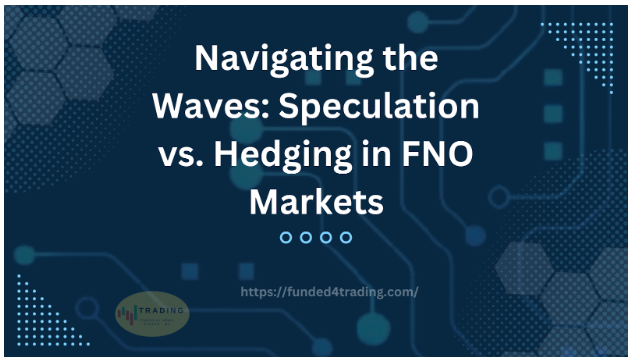In the intricate world of financial markets, investors often find themselves at a crossroads, pondering the age-old question: to speculate or to hedge? This dilemma is particularly pronounced in the realm of Futures and Options (FNO) markets, where the stakes are high, and decisions are made against the backdrop of market volatility. In this exploration, we delve into the nuances of speculation and hedging, dissecting their distinctive features, risks, and rewards.
Understanding Speculation:
At its core, speculation involves taking calculated risks in the pursuit of capitalizing on future market movements. In the FNO arena, speculators aim to profit from price fluctuations without necessarily possessing the underlying asset. This strategy hinges on forecasting market trends, leveraging analysis, and, at times, relying on intuition.
Speculative trading demands a thorough understanding of market dynamics, technical analysis, and the ability to swiftly adapt to changing conditions. Successful speculation can lead to substantial gains, making it an attractive option for those with a high risk tolerance and a keen sense of market trends.
However, the flip side of speculation is the inherent risk of financial loss. Markets, especially in the FNO segment, can be unpredictable, subject to external factors and global events. Speculators must be prepared to weather downturns and implement risk management strategies to safeguard their capital.
The Art of Hedging:
In stark contrast to speculation, hedging is a risk management strategy employed to mitigate potential losses. Hedgers use FNO instruments to offset the impact of adverse price movements in the underlying assets they own. This conservative approach serves as a financial safety net, shielding investors from the brunt of market volatility.
Hedging involves taking equal and opposite positions in the cash and derivatives markets. For instance, if an investor owns a portfolio of stocks and fears a market downturn, they may choose to take short positions in index futures to offset potential losses in the equity market.
The primary advantage of hedging lies in its ability to provide stability and safeguard against unforeseen events. While it may limit potential gains in bullish markets, the protection it offers can be invaluable during downturns, ensuring a more consistent and secure financial journey.
The Balancing Act:
The decision to speculate or hedge is not a binary one; rather, it’s a delicate balancing act that depends on individual risk tolerance, market outlook, and investment goals. Many investors adopt a hybrid approach, combining elements of both strategies to create a diversified portfolio that can weather various market conditions.
One must acknowledge that speculation and hedging are not mutually exclusive. Seasoned investors often employ a judicious mix of both, adapting their strategies based on market sentiment and economic indicators. This pragmatic approach allows for a dynamic response to the ever-evolving financial landscape.
Conclusion:
In the world of FNO markets, the choice between speculation and hedging is not a matter of right or wrong but a strategic decision that reflects an investor’s risk appetite and market outlook. While speculation offers the allure of substantial gains, it comes hand-in-hand with heightened risks. On the other hand, hedging provides a safety net but may limit the upside potential.
Ultimately, successful navigation of the FNO markets requires a nuanced understanding of these strategies and the wisdom to apply them judiciously. As we navigate the ebbs and flows of financial markets, the key lies in striking a delicate balance between speculation and hedging, ensuring a resilient and adaptive investment approach in this dynamic landscape.

